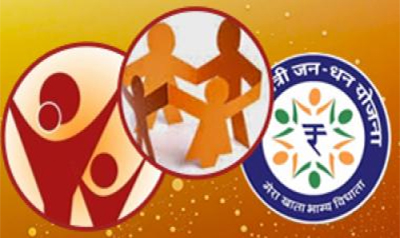Human Development Report for the State of Uttarakhand
Principal Researchers:
Prof. Alakh N. Sharma
Theme: Growth and Employment, Education and Capabilities, Health and Nutrition, Gender and Development & Security and Vulnerability
Sponsors:Planning Department, Directorate of Economics and Statistics, Government of Uttrakhand
Aims & Objectives: The Uttrakhand Human Development Report (UHDR) is an important initiative towards addressing the human development challenges faced by the State of Uttrakhand and envisages identification of the problems both at state, sub-regional and district levels as well as provide broader strategies for meeting the challenge. This report assessed the progress of various indicators of Human Development such as income and consumption expenditures, livelihood and levels of living, access to employment, health and education, overall empowerment of the vulnerable groups, sustainability and environment, equality, etc. during the recent past. Report covers various aspects of human development including the quality of life of the people, in Uttarakhand, which depends upon employment and livelihood opportunities, educational attainments, health and available health services, access to basic civic services and infrastructure, water, the environment and forest resources in the hilly state.
The objectives of the Report were:
- To measure the gaps in the various Indicators of Human Development across various districts of Uttarakhand and depending upon the availability of data across various groups.
- To prepare various Composite Indices relating to Human Development to capture the disparities across districts. Such indices include the Human Development Index (HDI), Gender Inequality Index (GII) and Gender Development Index (GDI). Depending upon the availability, data from a primary survey, Health poverty Index (HPI) was also calculated across districts and across various groups.
- To analyse and examine the status of Sustainable Development Goals (SDGs) for the state recently been adopted at a global level.
- To delineate broad policies and strategies for enhancing and financing human development in the state so as to bridge disparities for promoting inclusion and achieve the SDGs.
Methodology: The analysis carried out was based primarily on available secondary data sources as well as the primary survey conducted by IHD in thirteen districts of the state viz., the UKHDR Survey, 2017. Before conducting a detailed household survey, a listing or complete census of the households in the identified villages/urban census enumeration blocks (CEBs) was also conducted with basic questions pertaining to a household’s characteristics. Qualitative information was gathered through Focus Group Discussions (FGDs) with the beneficiaries of various government programmes in sectors relevant to human development (e.g. Rashtriya Swasthya Bima Yojana(RSBY), Janani Suraksha Yojana (JSJ), MNREGS etc.), self-help group members, women, unemployed youth and SC/ST women etc. In-depth interviews with key informants (KIs) such as district level officials and other government officials from various departments were conducted. Various state level consultations and district level workshops were also organised in each district headquarter to discuss various human development prospects and challenges with district level officials, non-government organisations and various political representatives.
Each chapter provides strategies and policies that the state government can follow for achieving higher levels of development, including discussions on institutions and governance. Both secondary and primary sources of data were used for the preparation of the Report. The Report also compares districts on the basis of a composite index of human development. Following the UNDP’s methodology, 2017, three types of indices at the district level namely the Human Development Index (HDI), the Gender Development Index (GDI) and the Multidimensional Poverty Index (MPI) have been developed.
Salient Features:
- Human development achievements differ across districts, spatially as well as demographically.
- Improving income and health indicators emerge as the most critical policy concerns.
- Inequalities in opportunities with regard to health, education, and income have been pervasive.
- The distinct divides in achievements need to be bridged to improve overall human development outcomes.
- Major policy directions needed in terms of addressing Multidimensional deprivations across the districts.

